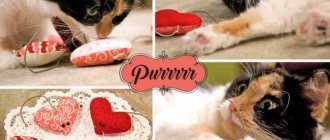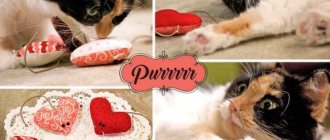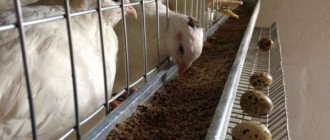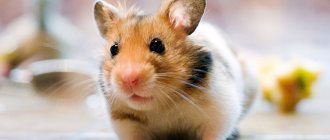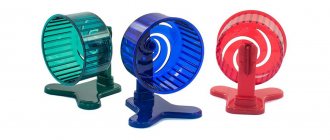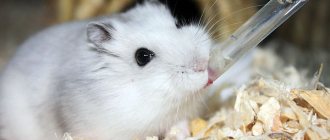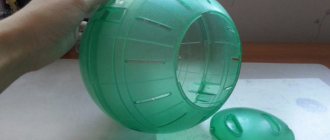How to play with a chinchilla
Despite their activity, chinchillas are rather shy animals.
It takes them a long time to get used to the new environment and owner. It will take you time to train your pet. It is important that the mutual acquaintance of owners with their chinchillas proceeds gradually, so be patient. First of all, the animal must get used to the new environment, to housing and food, and of course to your appearance and your smell
At first, you don’t need to pull the chinchilla out of the cage, so as not to bring it to a stressful state.
Therefore, first you need to stick only your hand through the open door into the cage, so that the animal can carefully approach it and sniff it, or dare, even climb on it and carefully examine it. First of all, the animal must get used to the new environment, to housing and food, and of course to your appearance and your smell
At first, you don’t need to pull the chinchilla out of the cage, so as not to bring it to a stressful state. Therefore, first you need to stick only your hand through the open door into the cage, so that the animal itself can carefully approach it and sniff it, or dare, even climb on it and carefully examine it
First of all, the animal must get used to the new environment, to housing and food, and of course to your appearance and your smell. At first, you don’t need to pull the chinchilla out of the cage, so as not to bring it to a stressful state.
Therefore, first you need to stick only your hand through the open door into the cage, so that the animal itself can carefully approach it and sniff it, or dare, even climb on it and carefully examine it
List of prohibited actions:
- approach from behind;
- make loud noises, shout;
- move sharply, suddenly.
Over time, your pet will get used to you, fall in love and begin to independently involve you in its games: hiding in your shoes and clothes, running over your body, affectionately biting as a sign of friendship.
Features of a chinchilla cage
On sale you can find various options for cages and specialized display cases for chinchillas. They all have a number of differences between themselves.
Dimensions
A chinchilla cannot be called a calm animal, so in order for the animal to be active, it is necessary to choose the right size of the cage. There should be enough space for the animal to run and jump freely. The minimum cage sizes for keeping different numbers of animals will be as follows:
- for one chinchilla - 80x65x50 cm;
- for a pair of chinchillas - 90x90x50 cm;
- several animals - 100x70x50 cm.
Materials
Galvanized mesh and metal are used in the production of cages. Trays in cages and additional accessories (drinkers, feeders) are made of plastic, as it is less susceptible to moisture. Various protruding parts should be avoided, as the animal can gnaw them, and this often becomes the cause of various diseases.
Shelves made of plastic with metal edging are very convenient to use, they are easy to clean and last a long time. But if the plastic is slippery and smooth, then the animal may get injured. It is better to give preference to rough surfaces made of natural materials.
It is also worth paying attention to the bars in the cage. The distance between them should not be more than 2.5 cm, otherwise the chinchilla may damage its paws while moving around the cage
For females with offspring, this distance should be even smaller - 1.5 cm. The rods should not be too thin, the permissible width is 1.5 mm.
In addition to cages, chinchilla owners often choose special display cases as a home for the animal. They are made of wood and plexiglass. Such materials are safer for chinchillas, but caring for them poses a number of difficulties.
Wood, unlike plastic and metal, quickly absorbs odors and cannot be disinfected. However, chinchillas are very fond of wooden houses; they can sharpen their teeth on wood.
Many modern display cases for chinchillas are made of plexiglass with an aluminum frame. For such houses, sheets of plexiglass with a width of 6 mm or more are used; the edges must be processed so that the animal does not get hurt.
Cells can be disassembled or intact
Design
By design, chinchilla cages can be dismountable or solid. The main advantages of collapsible cages are as follows:
- they are easy to transport;
- convenient to store;
- just carry out disinfection.
The main disadvantage is that all the constituent elements of the cage are not tightly fixed to each other, unlike a solid structure. Because of this, a loud noise is heard when the chinchilla is active.
Many models are equipped with a retractable tray, which makes cleaning much easier. Often such pallets are covered on top with a second mesh bottom. The garbage immediately passes through the mesh and ends up in the tray, but the animal can get its paws stuck in such a mesh and get injured trying to get out of it.
Cages equipped with wheels are very convenient to use. Debris regularly appears around the cage and cleaning will require constant moving of the cage. It is much more convenient to do this on wheels, but you need to take care of the stability of the structure.
Showcases take up more space than cages, but have good sound insulation.
Which house is better?
Which one is better to choose from?
Let's talk about the main materials from which wheels for chinchillas and other rodents are made.
Tree
Wooden products are an almost ideal option, since they can be made to order taking into account the required dimensions, they do not have sharp edges that can injure a pet, as well as a mesh covering that causes fractures of fingers and paws.
However, they have one huge disadvantage - they absorb moisture and odors. This means that it will be almost impossible to wash the surface of excrement, as well as get rid of the corresponding odor. Since chinchillas love to turn accessories and toys into toilets, the wooden wheel will have to be changed regularly or endure an unpleasant odor.
Important! Any wood absorbs moisture and odors, with the exception of surfaces that are coated with varnish or paint.
Metal
Iron structures are perhaps the worst option, as they are very dangerous. Firstly, such products are equipped with a mesh bottom, the diameter of the cells allows the chinchilla to insert a finger or claw. As a result, you will be dealing with an injured pet on a regular basis. Secondly, the wheels are placed on a metal stand, which can seriously injure or kill another rodent.
The chinchilla can stick its head under the stand, and the drum will press it down. At best, it will result in minor injury, at worst, death.
A good alternative to an iron wheel is an aluminum structure that is attached to the wall and therefore does not have a dangerous stand. Such products do not have a mesh bottom or fragments that can injure rodents.
Plastic
The plastic wheel does not absorb moisture and also has a safe design, but you will not be able to find a product with a suitable diameter. They are simply not on sale. The maximum diameter is 32 cm, and this is the minimum, which is suitable only for small individuals.
This is due to the fact that plastic wheels are most often purchased for hamsters, for whom the parameters described above are quite suitable.
Did you know?
Chinchillas do not have a strong odor because they do not have sweat glands or glands that secrete secretions for marking territory. Because of this feature, rodents cannot swim. We suggest you read: How to accustom a cockatiel to your hand - little tricks
Methods for installing a wheel in a cage
There are two ways to install running toys in a cage. The wooden structure can be secured to a wooden plank or plank using one or two self-tapping screws and placed on the floor of the cage. The disadvantage of this installation method is that if the board is too narrow, the animal will easily turn over its simulator. On average, the bar should be 10-15 cm wide.
The second installation method involves a tensioner screwed onto the bar. The structure is secured with wire to the cage wall. This option is more convenient, because The running wheel for a chinchilla is attached more securely and even very active rodents cannot turn it over or move it.
When buying a pet for your home, remember that caring for the pet and its health is your responsibility. A happy animal will become a great friend for your family members.
Accessories
Transporting pets is a necessity often associated with visits to the veterinarian or relocation. To safely deliver your pet, a wide variety of carriers are available for sale, the cost of which can vary significantly.
Carrying
An important accessory, especially if you like to travel and plan to take your pet with you. For transporting your baby, carriers made of opaque plastic are best suited. They are lightweight, easy to clean, resistant to the absorption of foreign odors, and will protect the rodent from drafts. The size should not be less than 15x20x20 cm.
Leashes and harnesses
A harness is the best option for safe and convenient walking of small rodents. The harness is firmly fixed on the animal's body; the length adjusters allow you to adjust the length of the harness to the desired size. A leash is also firmly attached to it in order to become familiar with the outside world.
How to make a sennitsa on your own?
You can develop a practical device yourself using available tools that can be found in any household. The process does not require special skills and knowledge and will not take much time, just set aside a few hours and be patient.
First you need to prepare materials and tools for work:
- boards or plywood,
- metal grate,
- furniture dowels (optimal size – 6 mm),
- jigsaw,
- screwdriver (can be replaced with a drill),
- hammer, convenient grinding tool (drill or grinder with appropriate attachment, sandpaper).
First you need to prepare boards or furniture panels - they are sawn to the required sizes. You should end up with four planks: bottom, side walls and back.
As an example, we can take the following board sizes:
- Side elements – 10x13 cm;
- Bottom part – 10x14.2 cm;
- Back board – 18x11 cm.
To secure the grate in the hay barn, you will need to prepare recesses in the boards intended for the side parts.
On all elements, the places for drilling are marked so that you know where to make the holes: for this procedure, a drill with a diameter of 5 mm is used. The holes need to be widened a little, and then the dowels must be driven in using a hammer. Then the side walls and the back are connected.
Now you need to prepare the bottom of the hay barn by making holes, which are then filled with dowels. The device is almost ready, but still requires grinding of all elements in order to eliminate the unpleasant and even dangerous rough surface. You need to insert a grill into the recesses made, and provide holes on the back wall for attaching to the cage.
DIY sennitsa made from lids
The previous option is quite difficult to implement and requires special skills. That's why we've prepared some simpler options.
First you need to prepare a grid of the required dimensions, which are determined in advance. The dimensions can be calculated using the formula for determining the circumference or simply measure the cover yourself using a meter. We recommend adding an additional cell to the data obtained to ensure overlapping fastening. The previously measured amount of mesh is cut off using wire cutters. The edges are processed with a file so that the material does not cling to the rods, because initially the free movement of the structure is provided when the rodent is happy to roll the can around the entire perimeter. If it is necessary to secure the hay, the edges may remain unpolished.
Next, the galvanized mesh is twisted and placed in the lid, and the second edge is fixed in the same way. The process does not require the use of force; it can be done with minimal effort. The mesh must be elastic and stable, otherwise you will have to use wire to strengthen the hay, additionally wrapping the structure. At this point the manufacturing process is complete, you can safely introduce the device into the daily life of your furry pet. To fill the device with hay, just remove one of the covers.
Chinchillas will look at the proposed device with curiosity and will roll the hay all over the cage, using it as a toy. Thus, it is possible to build not only an accessory for food, but also provide entertainment for the animals. To get rid of the noise, you can secure the structure using pieces of wire or carabiners. The optimal height is selected so that the animal can get food, but cannot relieve itself. This is a simple and quick way to equip a hay barn, which does not take much time and does not require special skills and knowledge. Animals will easily get the food offered without scattering dry grass over the entire area of the cage.
Making a simple wooden structure
Step-by-step steps for making a wooden structure measuring 35x25x25 cm without a bottom:
- Apply markings to the workpieces.
- Cut out the walls and roof with a hacksaw.
- Mark the entrance on the front wall and windows on the side walls.
- Cut out the entrance hole and windows along the outlined contours.
- Sand the edges of the resulting parts.
- Drill holes in the walls and roof for furniture dowels.
- Fasten the walls and roof.
- Disinfect the product with a cloth moistened with water and alcohol.
- After drying, place the product in the cage.
To extend the durability of the product, the edges of the house parts can be covered with metal plates. Branch food and hay should always be present in the cage.
Dynamic toys
With the help of moving toys and devices, the animal can actively frolic outside its cage. He needs outdoor games to keep himself in good athletic shape.
Hanging toys that have the ability to shake, stagger, rattle and ring are very popular with chinchillas. They are interested in pushing them and swinging them in different directions. In some cases, animals try to find another use for such things: they grind their teeth on them.
Too noisy, rattling toys for chinchillas have one drawback. Since these animals love to play in the evening and at night, loud noises coming from the cage may not be to everyone's taste. Therefore, at night, noisy toys can be removed away from the animal. This will give both him and all household members the opportunity to relax.
Tunnels
Chinchillas really like to play in various tunnels (pipes of different diameters). The animals hide in them, sneak around, and happily run after each other. It is imperative that the diameter of such a tunnel be 30–40 cm, then the animal will not get stuck in it.
Most often, plastic or wood is used to make such a toy. A metal edging is desirable for a wooden tunnel, otherwise the animal will chew the edges of the toy.
Plastic tunnels are produced in different versions. They are made in such a way that, if desired, they can be disassembled and reassembled, giving them a different shape.
If such a toy is made of translucent plastic, the animal will be more comfortable in it: it will feel safe there. And it will be easy for the owner to find him, even if he fell asleep somewhere in the middle of the pipe.
Selection rules
Before giving your chinchillas any accessories, you need to know the rules and regulations for using these toys. First you need to understand what material the accessory is made of. Chinchillas are prohibited from giving toys made from:
- rubber;
- low-quality plastic;
- cement;
- lime;
- paper;
- cardboard;
- glass
Also, some types of wood are contraindicated for these pets.
There are some other selection rules that will have to be taken into account when purchasing.
- The chinchilla will be able to bite and swallow small objects.
- You should not purchase toys that have been painted, because the skin of the animal may rub against the paint, which can lead to poisoning. It is better to purchase accessories that have neutral tones or are completely colorless.
- It is forbidden to buy toys with sharp corners and jagged edges, because the chinchilla may get hurt.
Variety of toys
Today, a lot of cute things are sold for the chinchilla that could brighten up its leisure time. One of these inventions is the chinchilla ball. What is the meaning behind it? The thing is that this product is very convenient because it allows the chinchilla to be outside the cage while remaining in the safety zone. Thanks to such a ball, you don’t have to worry that the animal will reach out to the wires and gnaw them.
Video author – Sveta Zorina
Another great “sports equipment” for chinchilla activity is a running wheel. It comes in four types:
- plastic;
- wooden;
- metal;
- aluminum.
Thanks to the wheel, the animal will not sit in one place and will be able to lead an active lifestyle.
How to choose?
Having found out which toys are the most popular for your pet, let's try to make a choice.
- As for the wheel, the metal one is considered the most dangerous, despite all its reliability and durability. That is why, if you purchased a similar thing for your furry, then try to make it as safe as possible with your own hands. To do this, cover the chinchilla wheel with mesh or fabric so that the paw of a running animal does not fall into the gap. Don't forget about the diameter of the wheel either, as a toy that is too tight will lie idle as the chinchilla will not be able to fit in it.
- Tunnels are also suitable for animals. They are usually made of plastic and are absolutely safe for your pet. Chinchillas will also enjoy bridges on which they can run and stretch their legs.
- Wooden toys for chinchillas will be a wonderful gift. The most suitable option is products made from birch, cherry, and poplar. When choosing a wooden toy, make sure that it does not contain elements that could be made from oak or elderberry. In addition, they should not be varnished or painted - the animal may begin to chew on these objects, and chemicals will end up in its body.
Types of swimsuits
The stores offer a fairly large selection of bathtubs for bathing chinchillas, made from a variety of materials.
The simplest and cheapest of them are shaped like an aquarium and made of durable glass. There are ceramic baths in the shape of a house or some animal, berry or fruit. Wooden and plastic swimsuits of various shapes and sizes are also sold. There is no need to be afraid of glass bathing suits: the glass used is quite durable, it is not of particular interest to the animal, and therefore the chinchilla will not try it on the tooth.
Glass is also easier to clean and dry and does not absorb odors. Plastic swimsuits have a small drawback - plastic is not so durable and reliable: it can burst, crack, and an animal can start gnawing on it. Getting plastic particles into your stomach will not lead to anything good. Plastic swimsuits are lighter, which means they are easier for animals to turn over. The best option is a ceramic bathing suit. It is quite heavy and stable, ceramics are not interesting to rodents and are easy to clean. Wooden bathing suits are quite popular, but have a big drawback - fragility. The tree will definitely be chewed by the sharp teeth of the chinchilla.
What toys do chinchillas like?
Today there are a large number of different toys and devices for chinchillas on sale. But the pet will choose toys on its own. Each animal has individual preferences, so before you entertain your chinchilla, you need to find out what it likes.
There are animals that bring a ball if you slightly push it in their direction. But there are also those who do not react to it at all.
When a new toy appears in a chinchilla’s cage, you need to observe its reaction and figure out whether the animal likes it or not. We should not forget that some objects can pose a threat to the baby’s health, and do not allow them to get into the cage.
Toys for chinchillas are an important part of their life. When there are no accessories in the cage, the animal, which has nowhere to put its energy, may begin to bite off pieces of wool from its coat.
The process of making a display house for fluffy and charming chinchillas
You need to take wooden panels and cut out of them using an electric saw or manually panels measuring 1200 mm by 800. Then everything is simple - to the top and bottom of a wooden panel measuring 1200 mm we nail smaller ones of 800. Between them at the edges we add wooden posts that can either nail to the panels, or simply glue. Nowadays, it is increasingly possible to find a method of gluing parts together, rather than using good old nails.
Modern adhesives connect wood and metal much more firmly, even than welding and nails. So we live in a time of revolutionary change, when nails are simply becoming a thing of the past. Next, a galvanized mesh is nailed into the space between the posts, or you can use acrylic glass - it is extremely strong and does not break into fragments like regular quartz glass. If you use acrylic glass, you need to take care of the ventilation of the room.
In general, chinchillas are not famous for their pungent odor, their fur does not cause allergies, and the animal does not emit unpleasant odors. But when using a grille, all the odors from the display case will get into the apartment, and if you take care of creating special ventilation for the animal, then it is possible to get rid of the unpleasant smell from the chinchilla house once and for all. Acrylic glass is glued using glue, and the edges need to be treated with sealant so that air does not leak behind the glass and from behind it.
Product requirements
The question arises - do it yourself or buy it ready-made?
There are no big differences in the design of a human hammock and a chinchilla hammock. Both consist of elements that are securely attached to four points of support and are some distance from the ground level.
If the hammock is made of fabric, it must:
- be dense enough and not susceptible to rodent teeth;
- securely fixed to the roof/walls of the cage using carabiners or tied with such materials that a captive chinchilla cannot chew through them;
- have an environmentally friendly, safe and durable material base - it should not tear or stretch when an animal jumps on it (fleece, denim, cotton fabrics).
Fur care
But what is really needed is a good brush to care for the animal’s thick fur. They get used to using a comb gradually. Usually chinchillas like this procedure and do not express dissatisfaction. Regular brushing will help avoid many problems with skin and fur: dermatitis, fungal diseases, infection with skin parasites. Also, using a comb before the exhibition, you can give your pet a more neat appearance.
However, finding a special comb for a chinchilla in Russia is not so easy: the product is quite rare and expensive.
It differs from ordinary brushes for animals by thinner, sharper and more frequent teeth, which can be compared to needles from a sewing machine. This brush combs out the animal’s thick fur well. You have a better chance of purchasing a special comb if you go to a large nursery. Typically, large breeders bring specialized products from European farms or work directly with manufacturers of products specifically for chinchillas. If this is not possible or the price of the product is too high, you can choose a brush for a cat or dog with the longest and most frequent teeth.
Interesting ideas for arranging a cage
Many owners prefer to equip a chinchilla’s home to order or independently, based on the pet’s preferences.
These furry animals are good at jumping with the help of their developed hind legs. Therefore, shelves at different levels are attached to the walls of their home for jumping.
The maximum height of the shelf is 80 cm, so that if the animal accidentally falls from it, it will not be injured.
Tunnels are made of plastic pipes and wood. It is advisable to make the edge of metal, otherwise it will quickly be chewed off. With some effort, you can weave a tunnel from willow twigs.
An inclined stick with circles of steps made of wood attached to it, or a small board with low slats attached are suitable as a ladder.
Ideas for arranging a cage
Chinchillas love chewable toys. They are easily made from pieces of sticks and wooden circles, previously washed and dried. Holes are made in the pieces of wood, then they are strung in random order onto galvanized wire, a chain and hung in an accessible place.
To add interest to the hanging toy, you can attach a bell.
Watching chinchillas play and exercise is great fun. Especially knowing that joy is brought through your own hard work. Diversifying the life of pets and making it more fun is the task of a responsible owner.
Do-it-yourself housing for a chinchilla
Often breeders decide to make a chinchilla cage with their own hands.
If you have a desire to tinker, then here are a few instructions to help you. First, buy the necessary materials for the job. It is better to give preference to wood. The frame will be made of bars, lining, boards and many shelves. Chipboard or plywood are also suitable. To close the holes, you need a metal mesh.
The following tools will be useful:
- hacksaw;
- jigsaw;
- hammer;
- drill and wood bits;
- stationery knife, marker;
- metal scissors;
- ruler.
To begin, prepare a drawing, taking into account the size of your room and the size of the desired pet house. Then start making the base, which needs to be covered with clapboard.
Next, the cage frame is built from the bars.
The bars are attached to the corners of the base using self-tapping screws or nails.
Using a metal mesh, the walls of the cage and its roof are tightened.
To make cleaning easier, we recommend making several doors on different sides.
Then you can install various shelves and place the accessories your animal needs on them.
It is best to cover the back of the cage with a sheet of plywood.
Finally, it is necessary to treat the house with a protective impregnation.
If you show your imagination, you can use old furniture and other available materials. An old cabinet is often used:
- The doors are removed from the furniture and the inside is repurposed for animals. Some of the shelves are cut out to allow animals to move freely.
- You need to cut a hole in the top of the closet and stretch the mesh so that the house is ventilated.
- In place of the cabinet doors, you can make frames from wood and tighten them with a metal mesh.
A do-it-yourself chinchilla display “from scratch” will require a little more time and skill.
So, you will need:
- metal tubes for the frame, or wooden yards;
- corners to connect parts;
- cogs;
- metal mesh;
- door hinges.
Then follow the instructions step by step:
| Step | Description |
| 1. | First you need to prepare drawings, taking into account the minimum acceptable dimensions for a chinchilla cage. |
| 2. | Next, we assemble the frame from pipes and yards, using corners for reliability, and fasten them with screws. |
| 3. | Make (internal) markings, designating areas for the animal’s life, that is, think about a place for sleeping, playing, toilet, bath, etc. |
| 4. | The mesh bottom is attached to the cage frame. For this you need a welding machine. |
| 5. | Connect the frame and walls of the house. |
| 6. | Next you need to install the door, use hinges and a lock. |
| 7. | Attach accessories inside the house. |
A do-it-yourself corner display case for a chinchilla is quite popular, because it can significantly save space in your apartment. To make one, show a little imagination and dexterity, and the result will definitely please you!
Where to place a chinchilla cage
Take seriously the choice of place in the apartment where the cage with the animal will be placed. It is better not to change the location of the cage throughout the animal’s life.
Here are some tips for you:
- the room should be dry and light;
- direct rays of the sun should not enter the cage;
- drafts should not be allowed;
- the air temperature where the animal lives should not exceed +23° C.
- the cage should not be placed next to electrical heating appliances;
- It is not advisable to place the cage on the floor;
- the cage should not be placed next to loud devices (equipment);
- Since chinchillas are very active at night, you should not place the cage in the bedroom. It's better to put it in the living room.
Cleaning a chinchilla's cage or display case
It is not enough to simply make a house, choose a place for it and move your pet into it; you must also not forget about caring for your pet’s home. Once a week you need to do a general cleaning, and at this time the animal should be placed in a carrier. The house can be wiped with a wet cloth and even vacuumed. At the end of cleaning, you need to wipe the cage dry. Disinfection (if necessary) is carried out using specialized products purchased at a pet store.
Benefits of soft carriers
A carrying bag allows you to protect your pet from outside influences.
We invite you to read: Herpes in cats: symptoms of the virus, treatment of infection, myth about the ability to be transmitted to humans
The animal will feel protected and experience less stress.
The fabric container is lightweight.
It is easy to store and does not burden the owner when transporting the pet.
Fabric carriers are elegant. Some varieties are no different from the usual bags.
For a fashionista traveling with a pet, a container can complement her look.
The carriers are made of material that easily allows air to pass through.
The pet will not lack oxygen or suffer from heat.
A properly selected container will not only make your trip easier, but will also guarantee comfort throughout the journey.
Unlike hard plastic baskets or metal cages, the animal feels more protected in a soft, cozy house. There is always an opportunity to hide from prying eyes, to hide from danger. This type of carrier takes up less space than a rectangular plastic box. In addition, through the flexible walls you can stroke and calm a pet frightened by an unfamiliar place, which may react inappropriately to a hand inserted inside, scratching the owner.
Self-tailoring provides ample opportunities for flights of fancy when decorating. All kinds of fabrics of original colors, beads, ribbons, buttons, braid, and other decorations are suitable for this. The bag can be made in the form of a familiar ladies' accessory. If the owner sewed such a carrier herself, she has the opportunity not to part with her pet even in those places where pets are usually closed.
Since making a mobile house for a pet is not particularly difficult for those who know how to operate a sewing machine, you can create a whole collection of designer attributes for different occasions: a light bag for the warm season, an insulated one for the winter, an elegant one for a trip to the guests, extravagant - for visiting tailed animals exhibitions.
In addition, an original portable bag for a cat, handmade and lovingly sewn to its individual dimensions, will be an excellent gift for a lover of these wayward pets.
Let's take a step-by-step look at sewing a carrier bag for a small cat or kittens.
Such a bag can be sewn, for example, from an old raincoat. In this example, the bottom and top are stitched. It is recommended to use fabric that is not very thick so that it can be sewn on a sewing machine. The bag consists of the following parts:
- the upper part is a rectangular piece measuring 32*55 cm,
- the bottom of the bag is a rectangular piece measuring 32*20.5 cm,
- two sidewalls,
- pens.
Dimensions are shown without seam allowances.
Beginning of work
Let's make patterns for the main parts of the bag on paper and cut out the parts from fabric.
When the main work of making the bag is completed, you can begin decorating.
Rhinestones, beads, threads, seed beads, applique, and fur are used for decoration. Decoration depends on the tastes of the housewife, the decorations at hand and imagination.
The following types of bead decoration are distinguished:
- Embroidery. This method is used primarily for decorating fabric accessories (silk, denim, cotton). In addition to beads, you can use rhinestones, coins, and ribbons.
- Pasting. It is suitable for leather, plastic, oilcloth and suede bags. Only use clear quick-fix adhesive. You will also need tweezers and a clean cloth to remove excess composition. After registration, the decor should completely stick together, this will take about two days.
The bag can be decorated with bead appliqué. The future decoration is woven separately and then simply glued or sewn to the bag. You can use this method if you plan to create a small beautiful accent on the bag in the form of a flower or a funny character.
Soft, cute, gnawing: who is it?
Chinchillas are cute rodent pets famous for their warm, dense fur and adorable faces. They are bought by those who want to make their home more comfortable, because these animals are so cute! But we must not forget that this furry creature also needs comfort and coziness. Therefore, you can make a cute house for a chinchilla in which the animal will feel safe.
Chinchillas are crepuscular animals, so a cage house will be very useful so that your pet can hide there during the daytime and take a good nap. A home for a chinchilla is as necessary as a bed for a person, so don’t skimp on such important little things.
Handy tools for furry rodent games
Owners of any pets often notice that their pets play with objects that are not at all suitable for these purposes. Chinchillas are no exception.
These animals can be truly delighted by the rolling of a walnut, the jingling of keys, the unwinding of a ball of thread, as well as climbing to the top tier of a cage along a piece of rope.
To understand what exactly interests your pet, offer him various objects and observe his reaction to them.
Important! Veterinarians do not recommend taking chinchillas outside for entertainment. In addition to the numerous diseases that these animals can become infected with in the fresh air, every outing for such a walk is a huge stress for the small animal.



